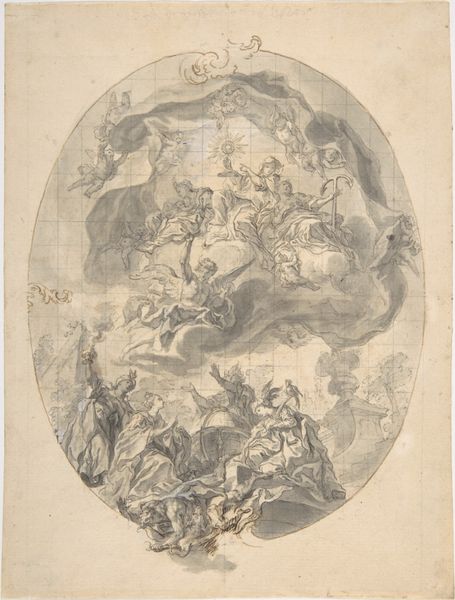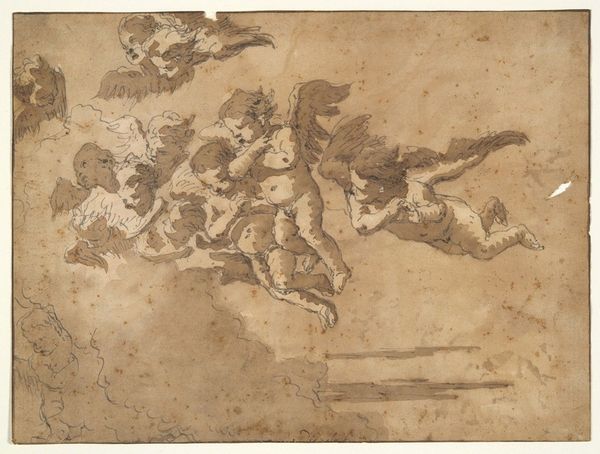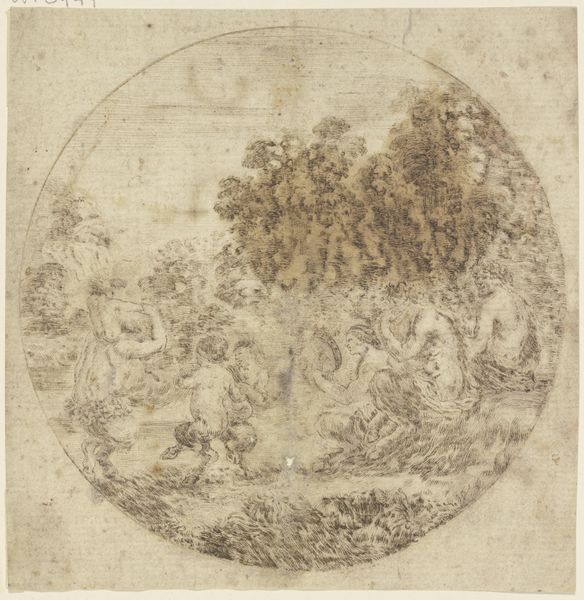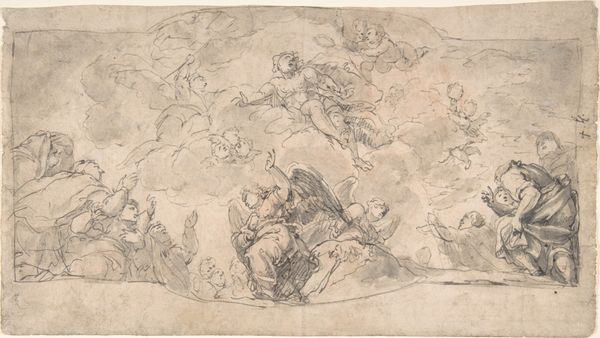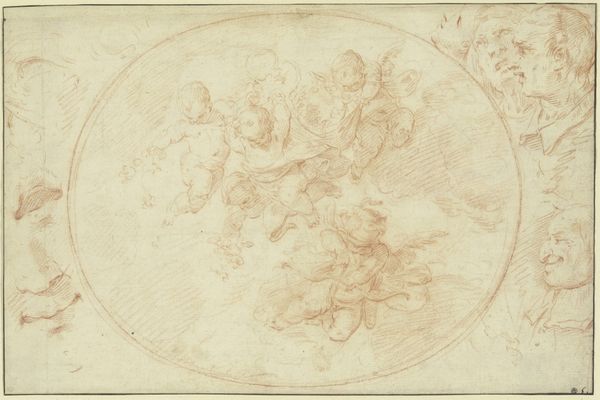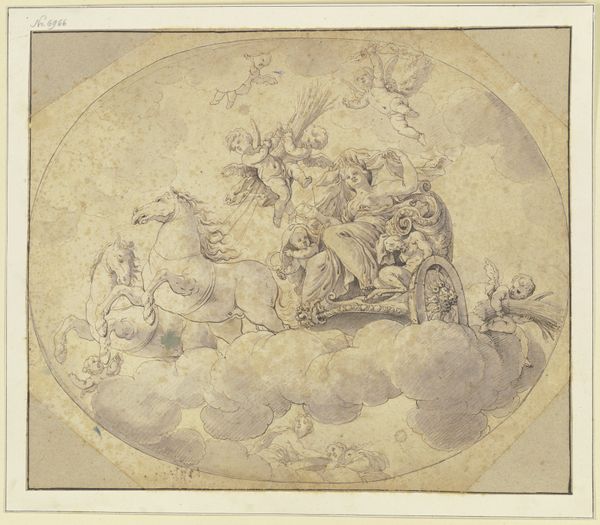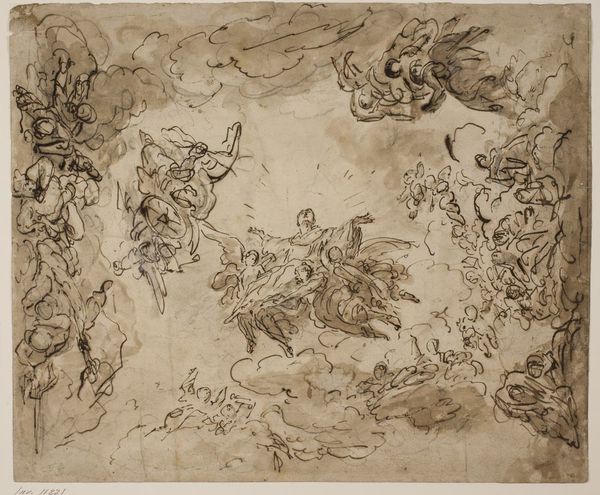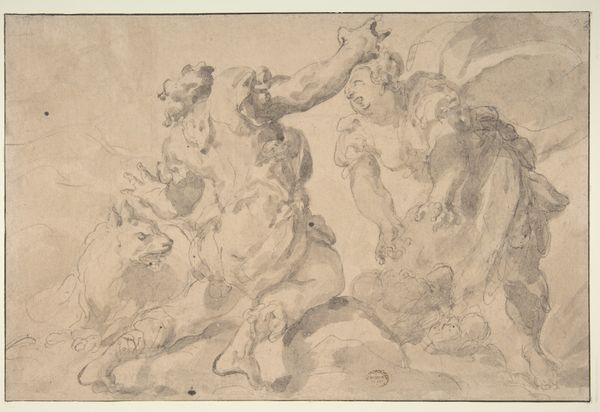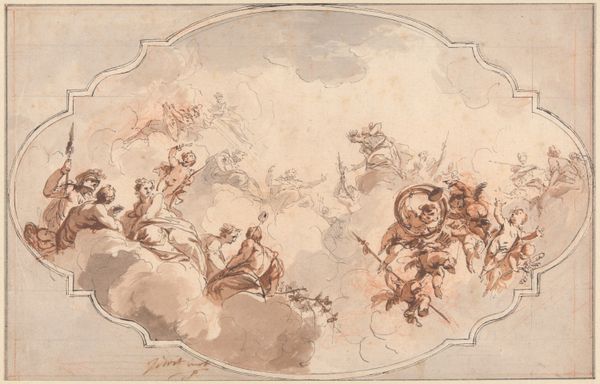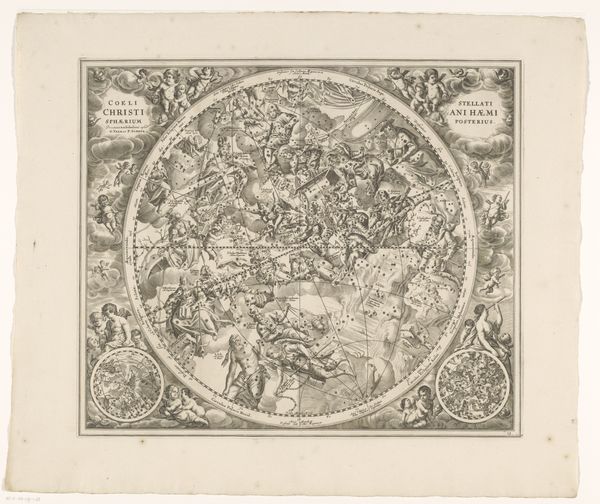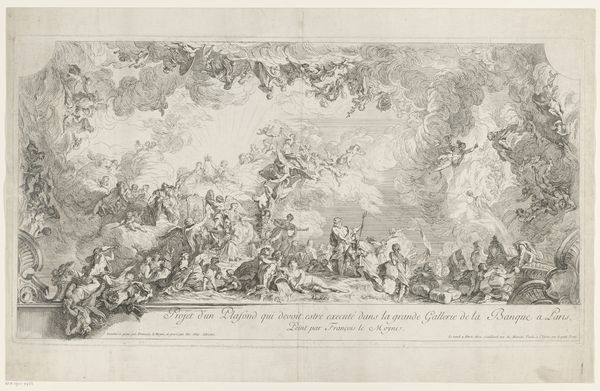
drawing, print, etching, paper, ink
#
drawing
#
allegory
#
baroque
#
ink painting
# print
#
etching
#
etching
#
figuration
#
paper
#
ink
#
watercolor
Dimensions: 11 3/4 x 12 11/16in. (29.9 x 32.3cm)
Copyright: Public Domain
Curator: This is Carlo Innocenzo Carloni's "Saint Lucy in Glory," created sometime between 1686 and 1775, executed with ink, etching, and watercolor on paper. It's part of the collection here at the Metropolitan Museum. Editor: Immediately striking is its dynamism. The swirling clouds, the upward thrust of figures, the overall circular composition – it creates a sense of boundless ascension, almost like an oculus. Curator: Yes, and the round form is significant. The circle has, since antiquity, symbolized the divine. Look at Lucy at the center. She holds the palm of martyrdom, representing victory over death, while above, a dove descends—the Holy Spirit. It’s all deliberately layered. Editor: Layered indeed. The single-color application certainly contributes to a unified pictorial field, yet the density of linework varies greatly, constructing zones of focus. The brightest portion surrounds the saint. It suggests an otherworldly luminescence. Curator: Precisely. Lucy is particularly important as she symbolizes the triumph of light over darkness. Historically invoked against eye diseases, Saint Lucy’s eyes—often depicted on a platter—became powerful emblems. Note, they're subtly represented. Editor: That subtlety fascinates me. While steeped in religious iconography, Carloni’s technical facility makes it work as a drawing. Consider how each cherubic figure differs from the next, exhibiting masterful tonal shifts within that sepia range. The dynamism prevents any sense of forced solemnity. Curator: Baroque art often merged the earthly with the divine, offering emotional engagement alongside spiritual instruction. That intertwining becomes a visual conversation about humanity's potential for grace. This work functions both didactically, showcasing hagiographic symbolism, but with painterly qualities. Editor: A successful marriage, I'd argue, of formal and symbolic values. Its spiraling form lends the piece an emotional fervor – which for the viewer opens toward contemplation. Curator: It’s truly intriguing how the Baroque vocabulary continues to evoke deep responses centuries later, revealing the durability of symbolic frameworks. Editor: Indeed. By synthesizing observation with allegory, this composition serves both our visual delight and a symbolic contemplation of belief itself.
Comments
No comments
Be the first to comment and join the conversation on the ultimate creative platform.
